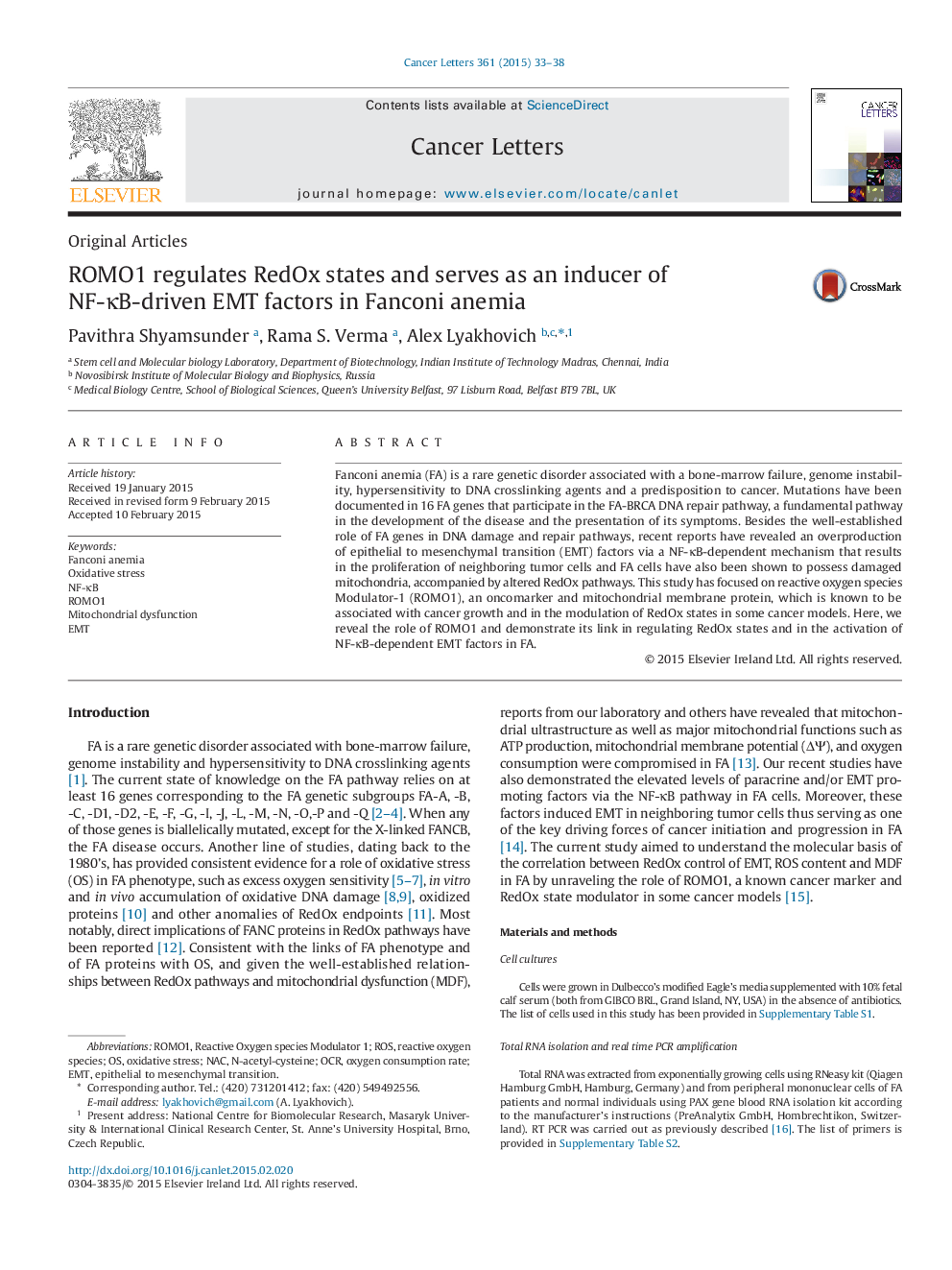| Article ID | Journal | Published Year | Pages | File Type |
|---|---|---|---|---|
| 2112441 | Cancer Letters | 2015 | 6 Pages |
•Mutations in FA genes may lead to mitochondrial dysfunction (MDF), deregulated RedOx pathways and oxidative stress (OS).•Overproduction of EMT factors via NF-kB results in the proliferation of neighboring cells in FA.•ROMO1, a mitochondrial membrane protein and an oncomarker, is overexpressed in FA cells.•ROMO1 is associated with modulation of RedOx states in some cancer models.•ROMO1 is the molecular link between OS-MDF-EMT in FA.
Fanconi anemia (FA) is a rare genetic disorder associated with a bone-marrow failure, genome instability, hypersensitivity to DNA crosslinking agents and a predisposition to cancer. Mutations have been documented in 16 FA genes that participate in the FA-BRCA DNA repair pathway, a fundamental pathway in the development of the disease and the presentation of its symptoms. Besides the well-established role of FA genes in DNA damage and repair pathways, recent reports have revealed an overproduction of epithelial to mesenchymal transition (EMT) factors via a NF-κB-dependent mechanism that results in the proliferation of neighboring tumor cells and FA cells have also been shown to possess damaged mitochondria, accompanied by altered RedOx pathways. This study has focused on reactive oxygen species Modulator-1 (ROMO1), an oncomarker and mitochondrial membrane protein, which is known to be associated with cancer growth and in the modulation of RedOx states in some cancer models. Here, we reveal the role of ROMO1 and demonstrate its link in regulating RedOx states and in the activation of NF-κB-dependent EMT factors in FA.
